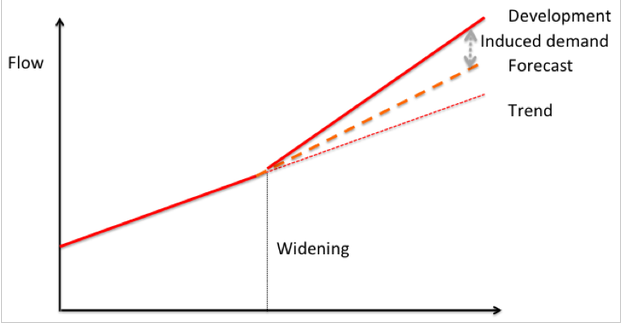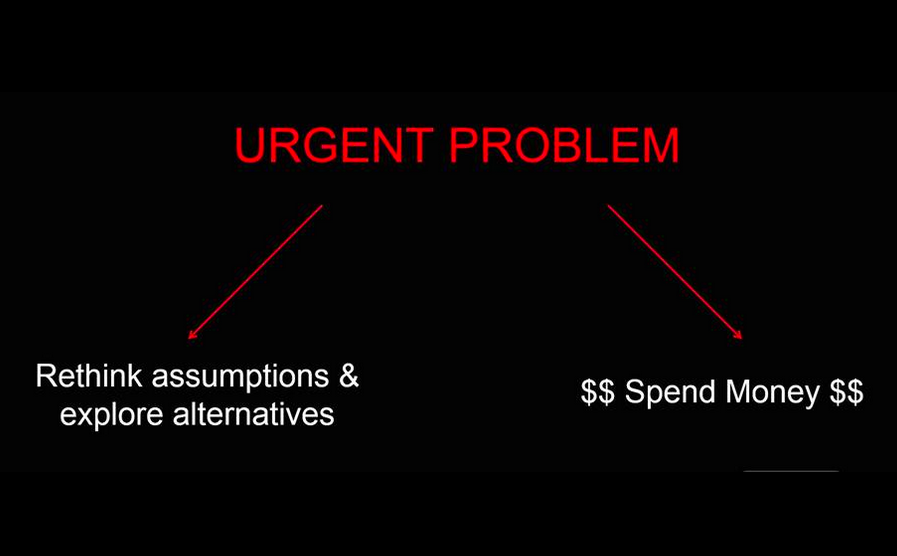Flow and efficiency over a larger grid/network and smarter growth land development are much better ways to address traffic issues than mindless capacity “improvements” in the name of “safety”. (without quantifying exactly how certain projects make roads safer)

FROM CITYLAB The red line represents vehicle flow along a given road. Traffic steadily rises until someone decides the road needs to be widened. Then the original trend line (dotted red) gets replaced with an even greater travel forecast (dotted orange), as we’d expect by creating more road capacity. But the actual new level of travel developed by this widening (solid red) is even greater than the forecast predicted.
As Citylab so aptly puts it, in other words, widening a road invites more cars onto it. This concept is called induced demand. And it’s an expensive circular trap that municipalities fall into far too often. The joke of course being “adding lanes to cure congestion is like loosening your belt to cure obesity.”
How do we break the pattern? I’ll use another chart I’m a big fan of. .
 As a community the default is usually $$spend money$$ or in our case throw money at a problem. Usually this involves doubling down on sprawl ponzi scheme solutions that got us into messes in the first place. This includes turning lanes and widening projects and generally slamming highway geometry onto our local road network.
As a community the default is usually $$spend money$$ or in our case throw money at a problem. Usually this involves doubling down on sprawl ponzi scheme solutions that got us into messes in the first place. This includes turning lanes and widening projects and generally slamming highway geometry onto our local road network.
This whole notion of induced demand is relevant today locally (as twp. considers throwing money at intersections) but also regionally (Highway Rt. 22 widening).
Now, Highway Rt. 22 has to be addressed. No doubt. The problem is self created by our focus on a logistics warehouse economy over the years. But the solution cannot be widening alone. Widening is a temporary at best solution. A band aid. (in this case a billion dollar band-aid….) The solution has to be comprehensive.
Same thing locally, we can’t just throw money at intersections alone and expect not to be dealing with the very same intersection 10 years down the line.
A next level approach example would be Rt. 222 (bypass) where I’ve been a advocate for grade separation. This is beyond simply widening. In that case an exercise in STROAD repair means taking out the signals to increase flow and raise the speed limit. Big picture on the Rt. 222 corridor we address congestion by making sure the Boulevard is contextually a Boulevard, and that the bypass actually functions as a bypass. STOP building STROADS. What is a STROAD?
Transportationist: Elements of access – Induced Demand
